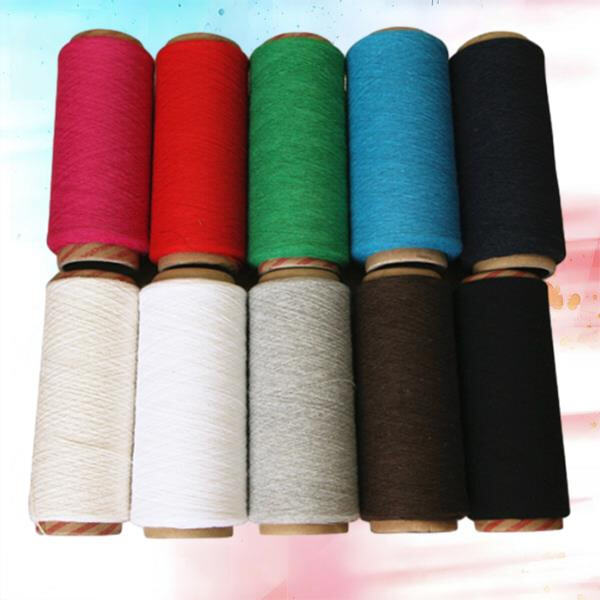Tel:+86 13967879487
Adres e-mail:[email protected]
Tel:+86 13967879487
Adres e-mail:[email protected]
Lucky Textile cena nitki 10s oe jest przeznaczona do wielu zastosowań – to pewien rodzaj przędzy, a także przyjemna w użyciu! Znajdziesz ją w kurtkach, kocach na popołudniową drzemkę i dywanach, a nawet w ręcznikach. W tym wpisie omówimy cenę tej przędzy oraz różne czynniki wpływające na jej koszt. Im więcej wiemy o tych procesach, tym lepiej rozumiemy przędzę oraz powody zmian jej ceny.
Ceny na nitkę 10s OE mogą się bardzo różnić. Więc tak, czasami może kosztować więcej, a czasami mniej. Na przykład, jeśli nie wyprodukowano wystarczającej ilości materiału do produkcji nitki, cena może wzrosnąć. To dlatego, że ludzie zazwyczaj płacą więcej, aby dostać coś, co jest trudno dostępne. Jeśli jednak jest zbyt dużo materiału na rynku, cena może spadać. Powód jest taki, że duża ilość jakiegokolwiek zasobu prowadzi do jego dezawaluacji.
Istnieje kilka innych zmiennych ekonomicznych, które wpływają na cenę marki LUCKY TEXTILE nitka 10s oe . Jednym z głównych czynników wpływających jest koszt surowców, takich jak bawełna czy wełna. Są to materiały, z których produkowana jest przędza, dlatego jeśli ich cena wzrośnie, to przędza 10s OE również będzie droższa. Jest to podobne do sytuacji, gdy cena składników Twojego ulubionego dania wzrośnie, to i ono samo będzie kosztować więcej.
Trzecim aspektem jest koszt płac dla pracowników produkujących nitkę. Jeśli wynagrodzenia tych pracowników stają się wyższe, cena nici również wzrośnie. Dzieje się tak, ponieważ firmy muszą obciążyć te koszty, aby móc dalej działać. Ponadto zmiany w regulacjach dotyczących handlu i podatków mogą wpływać na cenę nici 10s OE. Zmiany w umowach handlowych lub wprowadzenie nowych podatków mogą mieć wpływ na koszt zakupu tej nici.

Branża tekstylna przechodzi ostatnio trudne czasy. Oznacza to, że różne problemy napotkały przedsiębiorstwa produkujące różnorodne materiały, w tym LUCKY TEXTILE. cena nitki 10s oe . Cena rynkowa przędzy 10s napotkała również negatywne skutki tych wyzwań. Na przykład, firmy zagraniczne mogą produkować przędzę tańiej, ponieważ koszty pracy są niższe lub mają dostęp do tańszych surowców. To utrudnia przedsiębiorstwom produkującym przędzę 10s rynkową skuteczne konkutowanie i oferowanie konkurencyjnych cen.

Preferencje konsumentów ewoluowały z biegiem lat. Niektórzy zdecydowali się na materiały oparte na plastiku zamiast na surowcach naturalnych, takich jak bawełna czy wełna. To zmienia się w rodzaj tego, czego ludzie chcą, a to z kolei może wpłynąć na liczbę osób chcących kupić nitka 10s oe . Jeśli popyt spadnie, to również cena spadnie i firmy mogą mieć trudności z utrzymaniem cen na stabilnym poziomie.

Chcielibyśmy wymienić niektóre z zagranicznych czynników, które wpływają na cenę przędzy 10s oE NITKI ceny. Trend #1: Ludzie stają się bardziej przyjazni środowisku. Uczono Cię na danych do października 2023 r. W związku z tym niektóre firmy próbują podejść do tych procesów w bardziej ekologiczny sposób. Mogą one pracować z bawełną ekologiczną lub innymi materiałami zrównoważonymi, co czasami wiąże się z wyższą ceną przędzy.
Wysyłamy z naszej fabryki 120 kontenerów miesięcznie do ponad 500 klientów na całym świecie. Dysponujemy profesjonalnym zespołem logistycznym oraz gwarancją posprzedażową dotyczącą ceny przędzy 10s oe. Obsługa online dostępna 24/7 przez 24 godziny na dobę. Skupiamy się na tym, by Twoje zamówienie zostało dostarczone bezpiecznie i szybko. Doceniamy każde zamówienie, jakie otrzymujemy. Chętnie również zapraszamy Cię do odwiedzenia nas.
Głównym celem działalności firmy jest produkcja przetworzonych przędz, takich jak przędza do skarpet, cena przędzy 10s oe, przędza do hamaków oraz wszystkie inne przędze tekstylne. Różne składniki przędz można dostosować indywidualnie. Dostępnych jest 40 kolorów. Wsparcie dla naszych produktów gwarantujemy dzięki ponad 30-letniemu doświadczeniu w produkcji. Nasi klienci znajdują się na całym świecie. Zapewniamy doskonałą obsługę dzięki naszym zawodowym zespołom technicznym i posprzedażowym.
Nasza firma jest w stanie spełnić wymagania certyfikacyjne związane z ceną przędzy 10s oe dla klientów. Dodatkowo, w naszej fabryce znajduje się kompletny zakres urządzeń badawczych. Po produkcji każda partia jest dokładnie testowana przed wywiezieniem do innych krajów. Obsługa posprzedażowa jest w pełni gwarantowana w języku angielskim, hiszpańskim, rosyjskim i innych językach. Skupiamy się na długoterminowej współpracy, a nie tylko pojedynczych transakcjach.
Jednym z największych producentów przędzy 10s oe w Chinach jest Lucky Textile Cangnan Factory Ltd, największe przedsiębiorstwo w Chinach produkujące przędzę regenerowaną, które zajmuje powierzchnię ponad 44 000 m². Posiadają one ponad 25 linii produkcyjnych. Wprowadziliśmy najnowocześniejsze urządzenia i maszyny zarówno w Chinach, jak i za granicą. Naszym celem jest dbałość o środowisko, innowacyjność i zrównoważony rozwój.